Third in BillyBadAxe’s Classic Electric Guitars 101 series: The Fender Stratocaster. With its beautiful contour body, Leo Fender created a masterpiece that is only rivaled by the Les Paul and Telecaster for most influential electric.
Actual overall sales figures being hard to come by, it’s a difficult job to try and name the best selling guitar of all time. Some will point to the Gibson Les Paul, and others to the same company’s S.G., but nobody seems to be able to come up with a definitive figure.fender-road-worn-strat-thumb If we move away from the idea of numbers, however, and take a look with our own eyes at which guitar the most legendary and influential guitarists in history have used, the Fender Stratocaster must rank above all others. In the 1950s, players like Buddy Holly, Ritchie Valens and Hank Marvin used it to kickstart the rock ‘n’ roll movement. In the 60′s, players like Jimi Hendrix and Eric Clapton dropped the roll, but kept the rock with a Strat in hand. In the 1970′s, Dave Gilmour, Ritchie Blackmore, and Rory Gallagher came on the scene, and in the 1980′s, the Strat was picked by the likes of Mark Knopfler and the Edge. In the 90′s players like Kurt Cobain and John Frusciante of the Red Hot Chili Peppers brought the Fender Stratocaster back to its raw roots. These, of course, are just some of the “rock” players. If we start to move into blues, we would talk about the monumental work of Buddy Guy and Stevie Ray Vaughan, as well as Bonnie Raitt, Robert Cray, and Ry Cooder. This fearsome list of players is made all the more remarkable by the fact that when Leo Fender designed the Stratocaster as the follow up to his successful Telecaster, it was primarily with country music in mind!
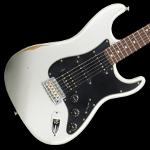
Model development
After the release of the Telecaster in 1952, from the early Esquire and Broadcaster models, Leo Fender received a lot of feedback from guitar players on how the design of his solid-body guitar could be improved. Not being a guitarist himself, Fender benefited from the working knowledge that he received and put it to practical use in his designs. The slab-like design of the Telecaster was not popular with a lot of guitarists, particularly swing player Bill Carson, as the straight edges of the body dug into the ribs if they played for long periods of time; which many, as working session men, did. At the same time, although the Telecaster had been fitted with a second neck pick-up after the Esquire had first been issued with a single unit at the bridge, there was a feeling that more pick-ups would allow for more tonal variety. According to Bill Carson, he modified his own Telecaster so heavily that Fender decided to keep the Telecaster in production and start up a whole line of guitars based on Carson’s modifications. Indeed, the Stratocaster was originally known as “Carson’s Guitar.”
These modifications initially meant contouring the back upper area of the body to fit more comfortably against the guitarist’s ribs as they played, as well as chamfering the upper front left of the body where the right arm held the guitar in place. Carson also sought a vibrato unit that would hold its tuning while being played. There was a very practical reason for this, as the vibrato arm, or tremolo, when used in conjunction with a volume pedal, could be used for Hawaiian-style swells that gave a steel guitar sound to the track. If the guitarist could produce these sounds in addition to the usual guitar rhythm and fills, he or she would be paid double for the session. After working with in-house technician and Hawaiian guitarist, Freddy Travares, Fender came up with the distinctive Strat tremolo arm and bridge device, the design of which remains largely unchanged to this day. The bridge on the Strat differed from that of the Telecaster in that each string had its own saddle, as opposed to the shared system on the earlier guitar — a constant source of tuning problems. The Strat also featured a new cutaway at the top of the body for better access to the higher frets and to reflect the ever burgeoning interest in futuristic designs so prominent in the 1950’s. Finally, a third pick-up was added to the middle section of the strings.
Sound & adaptability
This third pick-up, along with the streamlined design meant that the Stratocaster had a much smoother and adaptable tone than its Tele cousin. Originally a hit with the country and western guitarists that Leo Fender had intended it for, the Stratocaster’s release was also perfectly timed to coincide with the birth of rock ‘n’ roll that same year of 1954. The guitar was soon creating some of the piercing lead lines and chunky rhythms of the new style, as well as the clean picking twang of the country movement.
Guitarists learned early on that the three way selector switch that governed which pick-up was being used could be manipulated to activate two pick-ups at once, giving an “out of phase” sound to the guitar, and lending it even more tonal adaptability. This effect was achieved by sticking a match or tooth pick (Hendrix favored a match apparently) into the switch’s cavity along with the ordinary selector, therefore activating both at once. The Fender Company, by now under the control of CBS, starting issuing Strats with five way selector switches in 1977.
CBS
The CBS buyout of the company in 1965 was controversial as many perceived a decline in standards during its period at the helm. This was not due to any great changes in design, but rather a lack of interest in the standards of quality that the company had become known for until then under Leo Fender’s stewardship. One modification to the Strat’s design during the CBS period was the larger headstock that was introduced to improve tuning stability. It arguably succeeded in this aim, but many purists claimed that the new look was clumsy and unnecessary to what was already considered a classic design. Another modification that many viewed as unnecessary was the dropping of the four bolt plate joining the body to the neck in favor of a three bolt design.
The unpopularity of the CBS changes meant that Strats fell out fashion for some years at the beginning of the 1980s; however, with the takeover of the company by Bill Schultz in 1985, the emphasis swung back to the pre-CBS Leo Fender designs, and the guitar’s popularity grew again.
Models
Since the mid-eighties, numerous variations of Stratocaster have come on the market, these include the “Fat Strat,” a model that includes a humbucker pick-up at the bridge for a heavier and thicker sound than the standard single coil can provide. At the same time, many prominent Strat players have been honored with their own signature models, among them of course Hendrix and Clapton, but also Stevie Ray Vaughan, Ritchie Blackmore, Jeff Beck, Dick Dale, Billy Corgan, and Mark Knopfler.
The Fender Musical Instruments Corporation today operates out of Scottsdale, Arizona, but at the same time, it also manufactures guitars at its factories in Corona, California as well as Ensenada, Mexico. Its budget subsidiary Squier, meanwhile, has factories in numerous international locations such as South Korea, Japan, Taiwan, and Indonesia, where it produces affordable versions of the Fender lead line.
Fender Standard Stratocaster Electric Guitar

- $499, made in Mexico
- Maple “C” shaped neck, alder body, 25.5 scale length, 21 frets.
- The reviews on this MIM Fender are generally positive. Fit and finish may not be as good as a made in the US, or made in Japan Strat, but this guitar is a very good value and excellent entry point if you want the Fender name on the headstock of your guitar.
Fender American Standard Stratocaster

- $1199, made in USA
- Maple or Rosewood, modern “C” shaped neck; alder body, 25.5 scale length, 9.5″ fingerboard radius, 22 frets.
- This is the made in USA model. The fit and finish here is excellent. All of the electronics are top quality: pickups are usually Fender Custom Shop. Fender touts “hand rolled” fret edges for a “worn in” feel.
Fender Roadworn Player Stratocaster HSS

- Made in USA
- Maple neck, Rosewood fingerboard, modern “C” shaped neck; alder body, 25.5 scale length, 9.5″ fingerboard radius, 21 frets, Distressed Nitrocellulose Lacquer finish.
- Very interesting guitar. I really like this one. While I’m not into the whole “relic” your guitar fad, Fender didn’t take it too far. It has a nice aged look, but not overdone, ala the SRV clone guitars. The single coils are Texas Specials and the humbucker is a Seymour Duncan Pearly Gates Plus. So this Strat can rock the house at the bridge position or create beautiful, classic Strat tones in the neck and mid positions. Very versatile.(Currently this guitar is not available online. Check Fender’s site, or call around locally. –Dave)
Famous strat players:
…incomplete list, of course!
- Buddy Holly: Peggy Sue
- Jimi Hendrix: Stone Free
- Eric Clapton: Layla
- Stevie Ray Vaughan: Live in Nashville 1987
- Deep Purple (Ritchie Blackmore): Black Night
- Pink Floyd (Dave Gilmour): Echoes
- Dire Straits (Mark Knopfler): Sultans Of Swing
- Dick Dale: Misirlou
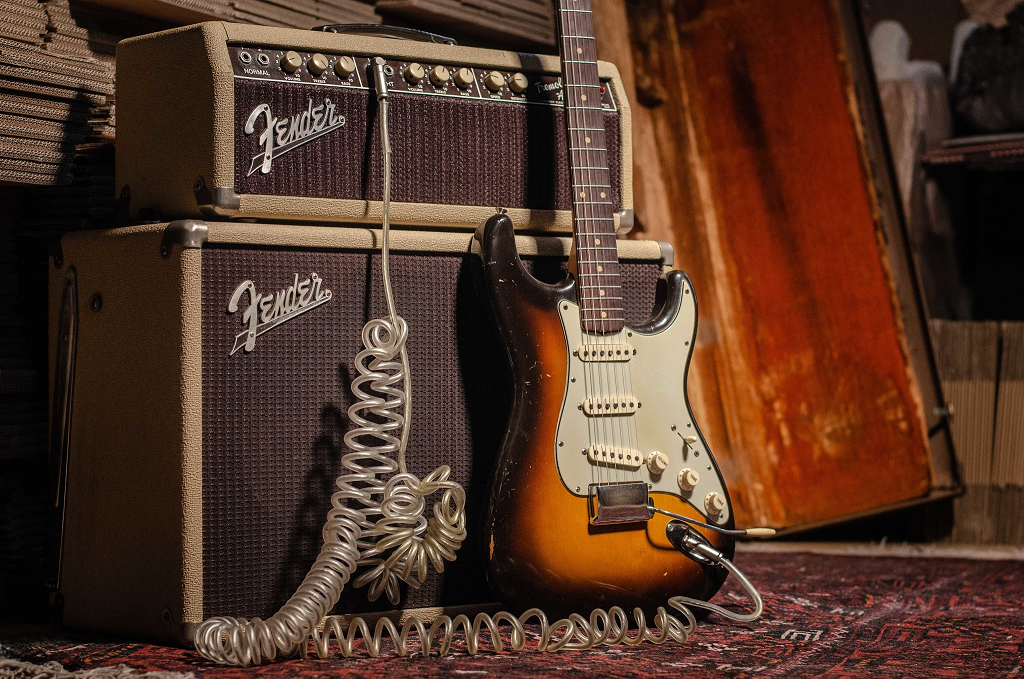

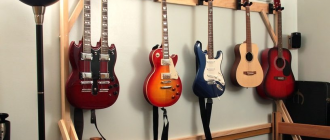
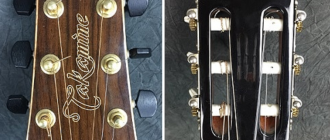
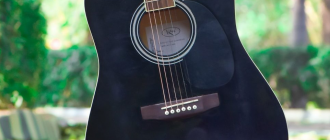

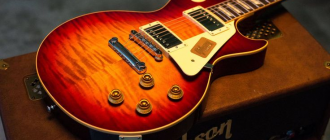
What year did fender invent HSS and put it on a stratocaster ????
Just bought a new Mexican Stratocaster a reissue of the 50’s Stratocaster how well are they made?
All I’ve ever heard about the MIM strats and teles has been positive. Great guitar. I hope it serves you well.
works of art.